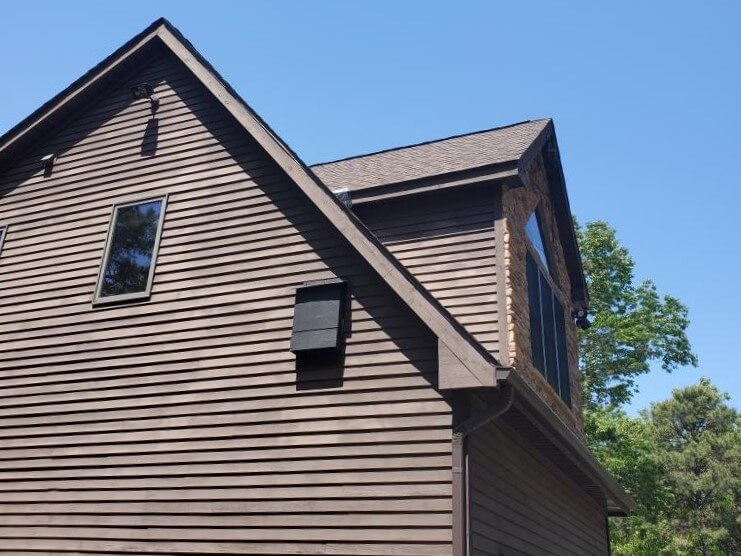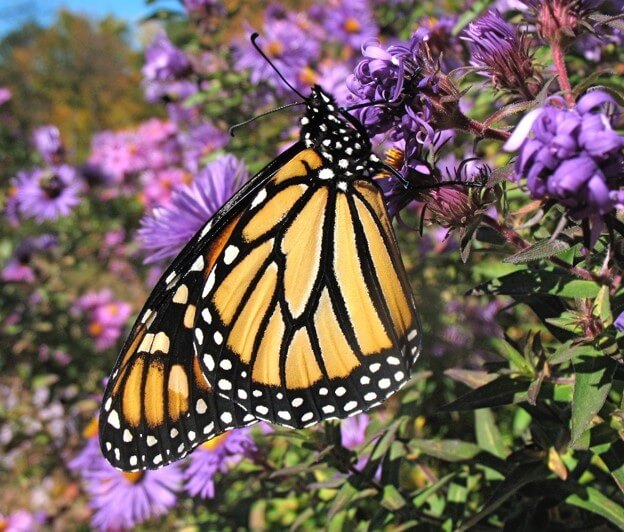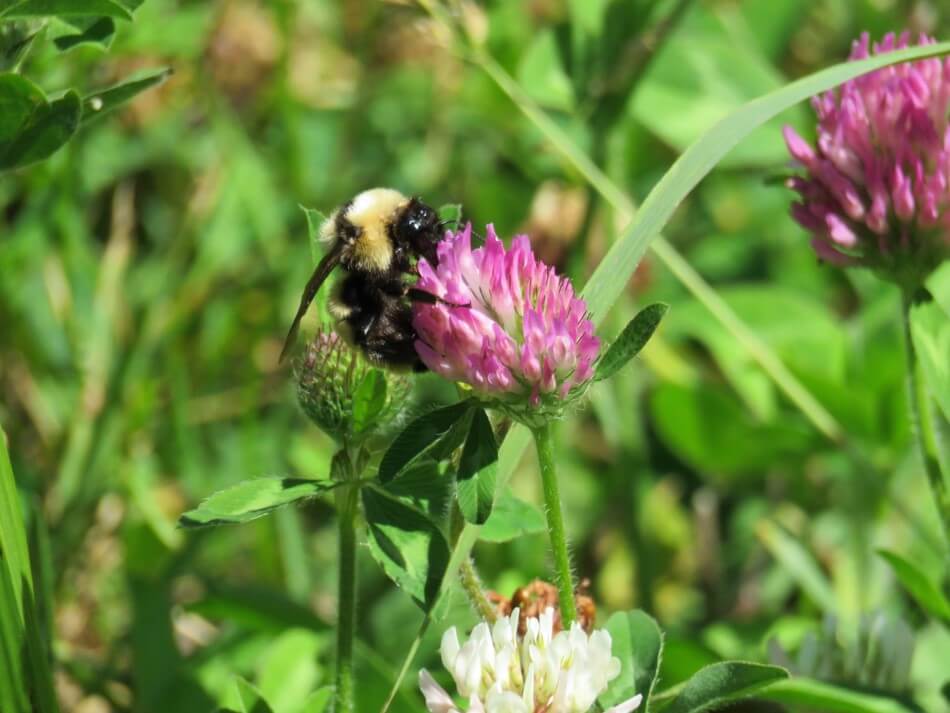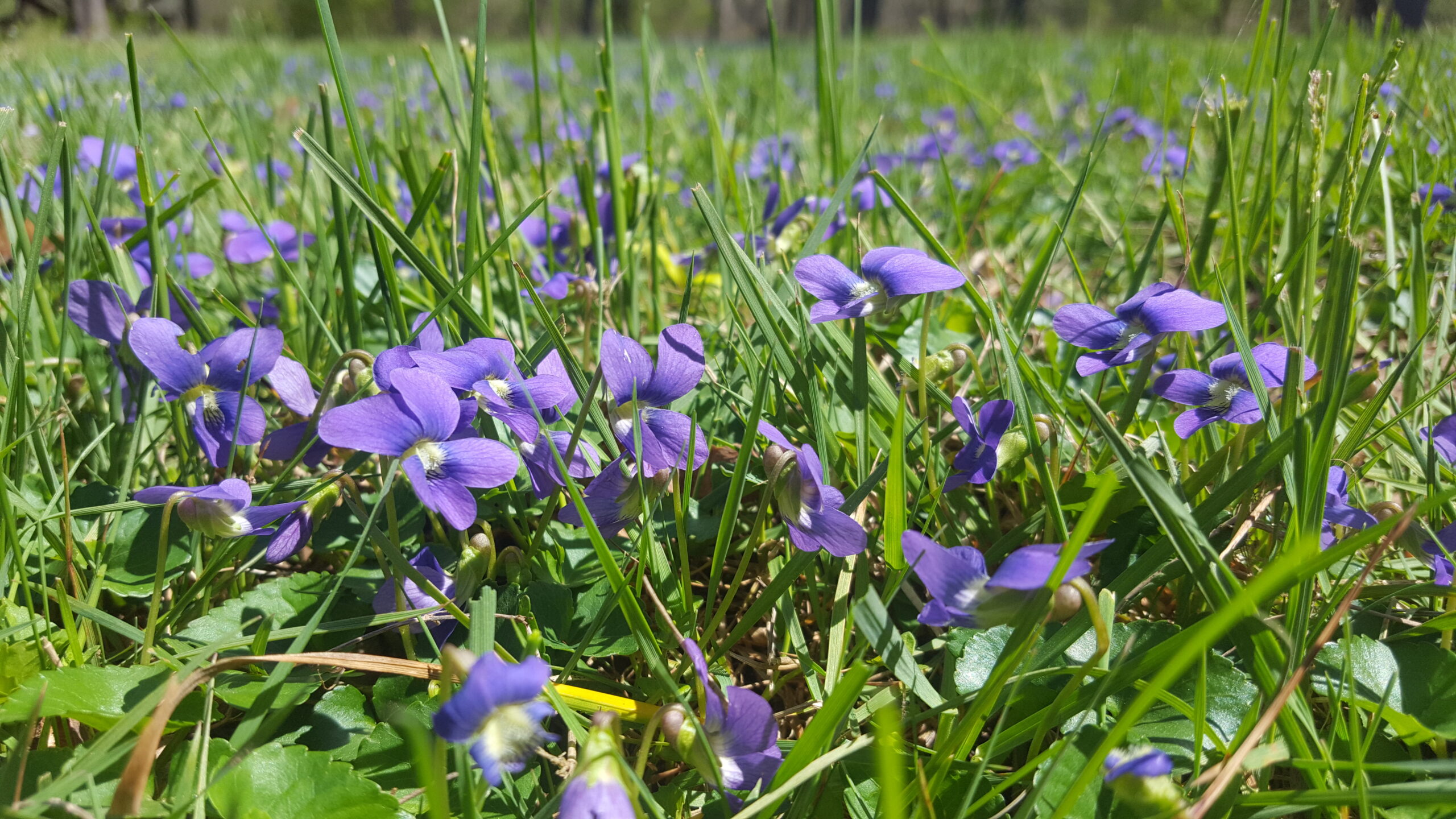In a highly urbanized state like New Jersey, “backyard” habitats can make a big difference for wildlife living in or traveling through our neighborhoods. Big or small, we can turn barren lawns into native wildflower meadows, soften property edges with shrubs and trees for shelter, add water or a nesting feature, and watch as wildlife make themselves at home!

The Backyard Community
There is a lot of wildlife living alongside our homes, whether we actually see them or not! Birds tend to be the most obvious, but salamanders, snakes, lizards, turtles, butterflies and moths, and myriad other species may be in our literal backyards. Wildlife need food, shelter, water, and in many cases, habitat connections to live out their lives. By creating these habitat elements in our yards, we can improve their lives and ours, and get to see some creatures up close.
Inviting Wildlife into the Yard
To attract native wildlife – birds, butterflies, frogs, turtles, snakes, pollinating bees, and insect-eating bats – think about their needs. Cottontail rabbits and white-tailed deer can also be frequent visitors to a wildlife-friendly yard.

Attracting Birds
Bird feeders and baths are good features to enhance viewing, but larger benefits come from planting and maintaining native trees, shrubs, and perennials. Native vegetation will provide food, cover, and structure that birds (and other wildlife) need, and will support beneficial insect species that birds and other wildlife will feed on. The insects are especially critical as food for hungry nestlings. Many birds nest in trees, others in shrubs, and still others use tree cavities. If it’s safe to do so, leave dead trees standing for birds like woodpeckers, wrens, chickadees, bluebirds, and screech owls, though nest boxes can substitute for trees. Also, keep your cats indoors.


Attracting Reptiles and Amphibians
For ground-dwelling wildlife like frogs, salamanders, turtles and snakes, providing vegetative and leaf cover on the ground will help them find reliable habitat and food. Leaving an area of the yard with natural leaf cover and fallen logs, and even a water feature if possible, will create the moist soil and insect food that these species love.

Attracting Bats
Bats in our region eat night-flying insects, serving an important ecosystem role while giving your backyard some free & organic pest control! Return the favor and help the local bat population by installing a bat box, either on a structure or on a post/pole. Bat boxes offer roosting space for maternity colonies (mother bats and their pups) during the summer, and they should be placed in a sunny spot at least 10 feet high. Here’s one good example of Bat House Floor Plans (pdf, 255kb). Trees – live or dead – are also important bat roosts. If it’s safe to do so, leave dead trees standing.




Attracting Pollinators
Butterflies and native pollinators are great candidates for backyard habitat management. Even small spaces make great butterfly gardens. These areas will also help to store greater amounts of carbon and help fight climate change. If you build it they will come. Some basic principles:
- Mow less. Even simple practices of mowing less or dedicating a portion of your yard to be allowed to grow up and only be maintained once a year go a long way to help our native wildlife.
- Mow during early spring, optimally during February and March, to maintain the habitat. Many species of insects emerge during April and a great many species are active through September, including Monarch butterflies on migration to Mexico.
- Do not use insecticides, and only use herbicides to selectively control invasive weeds.
- Plant a diversity of native wildflowers and plants that flower at different times throughout the growing season. Include species that are foodplants for butterfly larvae, such as Little Bluestem Grass and violets.
- Native trees and shrubs such as red cedar, silky dogwood, and blueberries are also great nectar sources and serve as foodplants for many native moths and butterflies.




Information on Creating a Wildlife-friendly Yard
- Jersey-Friendly Yards has great tips to help you create a better yard! Mow less and flower more!
- Learn more about Creating a Butterfly Garden
- For a more in-depth overview on creating pollinator habitat, visit New Jersey Conservation Cover for Pollinators.
- Check out this Best Pollinator Plant List, then search the list for Native Plant Nurseries.
- CHANJ – Connecting Habitat Across New Jersey – provides guidance for small landowners: CHANJ Guidance for small landowners.
- Learn which plants you should not plant and how to control invasive plant species.
- Be part of the Homegrown National Park movement…plant native, get on the map!
Structures for Wildlife
There are a variety of nest boxes, bat houses, and feeders to choose from. What to buy (or build) depends on what species you want to attract, and where you will put it.
- Bluebird Boxes – Make sure the hole is large enough for bluebirds but too small for starlings (1 1/2 inches in diameter). Boxes that have metal around the entrance (to prevent squirrels from making the entrance bigger) and a side that opens (to clean out the nest box in the winter) are preferable. The nest box should be mounted about 4-6 feet off the ground in an open area.
- Bird Feeders – Bird feeders can be placed anywhere, but be mindful of windows – they can reflect the outdoors and birds think they can fly through them (reflective or refracting window clings on the outside of the window will help). If you have bears in your area, only keep your feeders out during daylight hours between Dec 1 and April 1, or hoist them 10 ft in the air over a sturdy tree branch, and 10 ft away from a tree trunk, to keep them up year-round. Do NOT suspend feeders from a house or deck.
- Seed – Any type of feeder will do, but if you don’t want to feed squirrels you may want to invest in one that closes with the weight of a squirrel. Sunflower seeds seem to be preferred, but the regular seed mix is good in the winter for the juncos and sparrows. Empty and disinfect (9 parts water to 1 part bleach, rinse, let dry) feeders regularly. If you notice sick birds, disinfect the feeders and don’t put them back up until the sick birds are gone.
- Suet – Many species of birds like suet, particularly woodpeckers. The type a flavor of suet doesn’t seem to matter for the birds.
- Hummingbird – Native flowers are the nest source of nectar from hummingbirds, but you can lure them to a feeder using a 1:4 ratio of white table sugar to water (1/4 cup of sugar in 1 cup of water). Do not use brown sugar, honey, or red coloring. Hummingbird feeders need to be cleaned regularly to prevent fermentation – change the water and clean the feeders once a week in cooler weather, twice a week in hot weather, and more often if ants get trapped in the feeder.
Other Options to Consider: “No Mow May” and “Less Lawn”

The “Less Lawn” movement is about shifting away from the typical lawn to create a more diverse greenscape that supports pollinators and other wildlife. From the LessLawn website: “LessLawn is about enjoying more life in our landscapes… by sharing the land with our fellow species and by living more outdoors.” The website provides designs and the techniques to guide a transformed lawn, including guidance to avoid chemical pesticides, herbicides, and fertilizers.
Mowing your lawn less creates habitat and can increase the abundance and diversity of wildlife including bees and other pollinators. One way to reduce mowing is by participating in “No Mow May,” a conservation gaining traction across North America. The goal of No Mow May is to allow grass to grow unmown for the month of May, creating habitat and forage for early season pollinators. This is particularly important in urban areas where flowering plants may be limited. Check your local ordinances to be sure there are no penalties for not mowing your lawn.
What if I don’t own land?
Ask your landlord or homeowners association if you can plant native wildflowers or flowering shrubs. Look for a native gardening group or a land conservation organization in your area to help plan and create habitat on public lands. The CHANJ project has mapping that identifies land connection points where habitat enhancement will re-connect larger land tracts and improve habitat connectivity for wildlife.
 Official Site of The State of New Jersey
Official Site of The State of New Jersey
